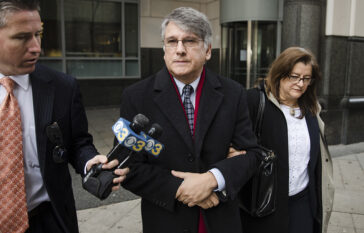July 02, 2021
Beat of the Week
(Honorable Mention)
Resourceful reporting, legal challenge reveal FBI going for the gold
has been breaking news about buried treasure since 2018, when the FBI conducted a secretive dig in a remote area of Pennsylvania, aimed at recovering a legendary cache of stolen Civil War-era gold. The FBI has long refused to confirm it was searching for the fabled gold — while also insisting it didn’t find whatever it was hoping to dig up.Rubinkam knew the FBI needed a federal search warrant to gain access to the site, but every document in the case was sealed ... as if the case didn’t exist. With help from AP attorney Brian Barrett and a Philadelphia-based media lawyer, a judge lifted the sealing order, revealing a veritable gold mine of news and confirming Rubinkam’s previous reporting: that the feds were, indeed, looking for gold. Among the details in the FBI’s unsealed affidavit: A contractor’s sensitive instruments had detected a huge underground mass with the density of gold.What the unsealed case didn’t include was a document describing what the FBI actually found. Federal prosecutors assert no such document exists because the dig came up empty. But the treasure hunters who led the FBI to the site in the first place believe the evidence says otherwise. They are seeking FBI records of the dig.Rubinkam’s story was among the top 10 most-viewed stories on apnews.com last week. It appeared on newspapers' front pages and spurred follow-ups, including by The Washington Post.https://aplink.news/gcohttps://aplink.news/jyq















